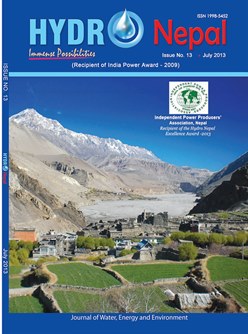The 60 versus 90 MW Battle over Upper Trishuli-3A The Victors and the Vanquished Classic Case of throwing the Baby out with the Bathwater!
DOI:
https://doi.org/10.3126/hn.v13i0.11381Keywords:
Plant, Optimisation, Upper Trisuli-3A, NEA, NepalAbstract
Abstract: Chronicling the Upper Trishuli-3A (UT-3A) controversy is necessary because it provides a classic example of what ails our power sector and why we suffer such long load shedding. With a concessional US$120 million loan from China, UT-3A was tendered in February 2009 as a 60 MW project but with an ‘alternative proposal’ caveat. Bids were opened in May 2009 and the lowest evaluated bidder, China Gezhouba Group Company (CGGC), included a‘25% of the cost’ caveat for the ‘90 MW option’. NEA had envisaged starting project construction ‘from the dry season of 2009’. However, a full two years lapsed before the order to commence work on the 60 MW UT-3A was given in June 2011. This unduly long two year delay and the ‘chalkhel’ therein could be another chronicle in itself. The 60 versus 90 MW controversy then spilled over to the public. The blistering partisan stands of the media were compounded by the bureaucratic ‘save your necks’ committees’ recommendations. Twenty months after the commencement order for the 60 MW was given, Prime Minister Baburam Bhattarai’s cabinet approved ‘in principle’ the 90 MW upgrading in January 2013. This decision was lambasted for abuse of power ‘for personal and party’s bene?t ….. no other motive than earning cash.’ Strangely, the cat was ?nally belled by Khil Raj Regmi’s bureaucrat-led Interim Election government when the NEA Board on 31st May 2013 approved the 90 MW upgrading to ‘optimize available resources.’ The NEA Unions, supported by political stalwarts, immediately rose up in objection. In a mere 12 days, the Interim government buckled and the NEA Board was forced to eat the humble pie: it reversed its 90 MW decision to 60 MW for a ‘more congenial environment’ in the supply of electricity. This article attempts to analyze this controversial issue by reconstructing the sequence of events and decisions so that latter-day researchers will judge the victors and the vanquished in the UT-3A controversy.
HYDRO Nepal Journal
Journal of Water, Energy and Environment
Volume: 13, 2013, July
Page: 8-15
Downloads
Downloads
Published
How to Cite
Issue
Section
License
The copyright of the articles and papers published is held by HYDRO Nepal Journal.
The views and interpretation in this journal are those of author(s), and HYDRO Nepal does not bear any responsibility for the views expressed by authors in the journal.




